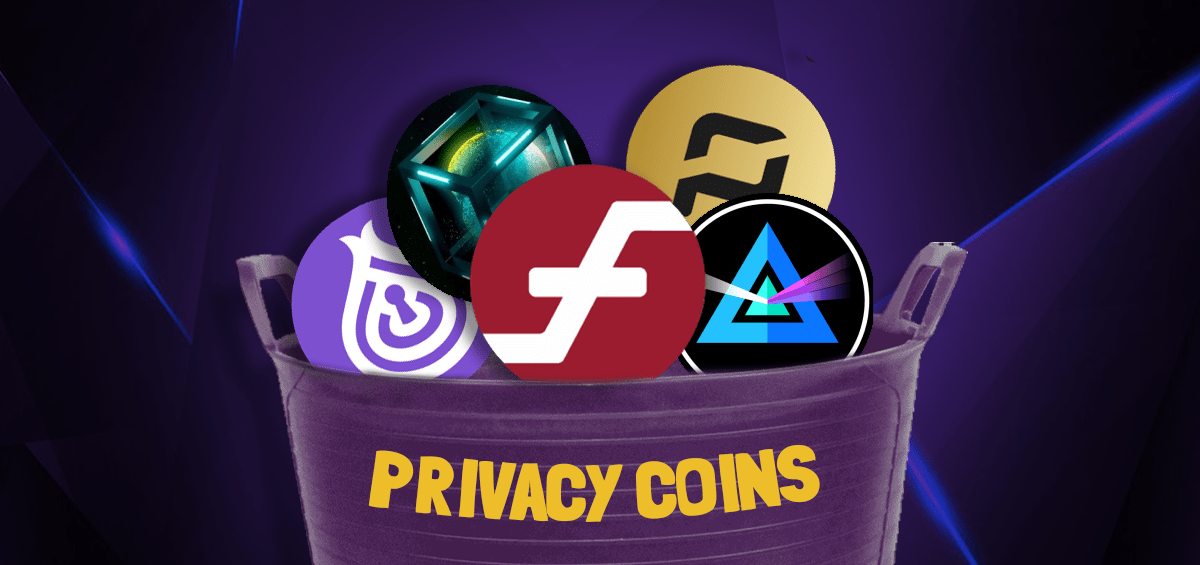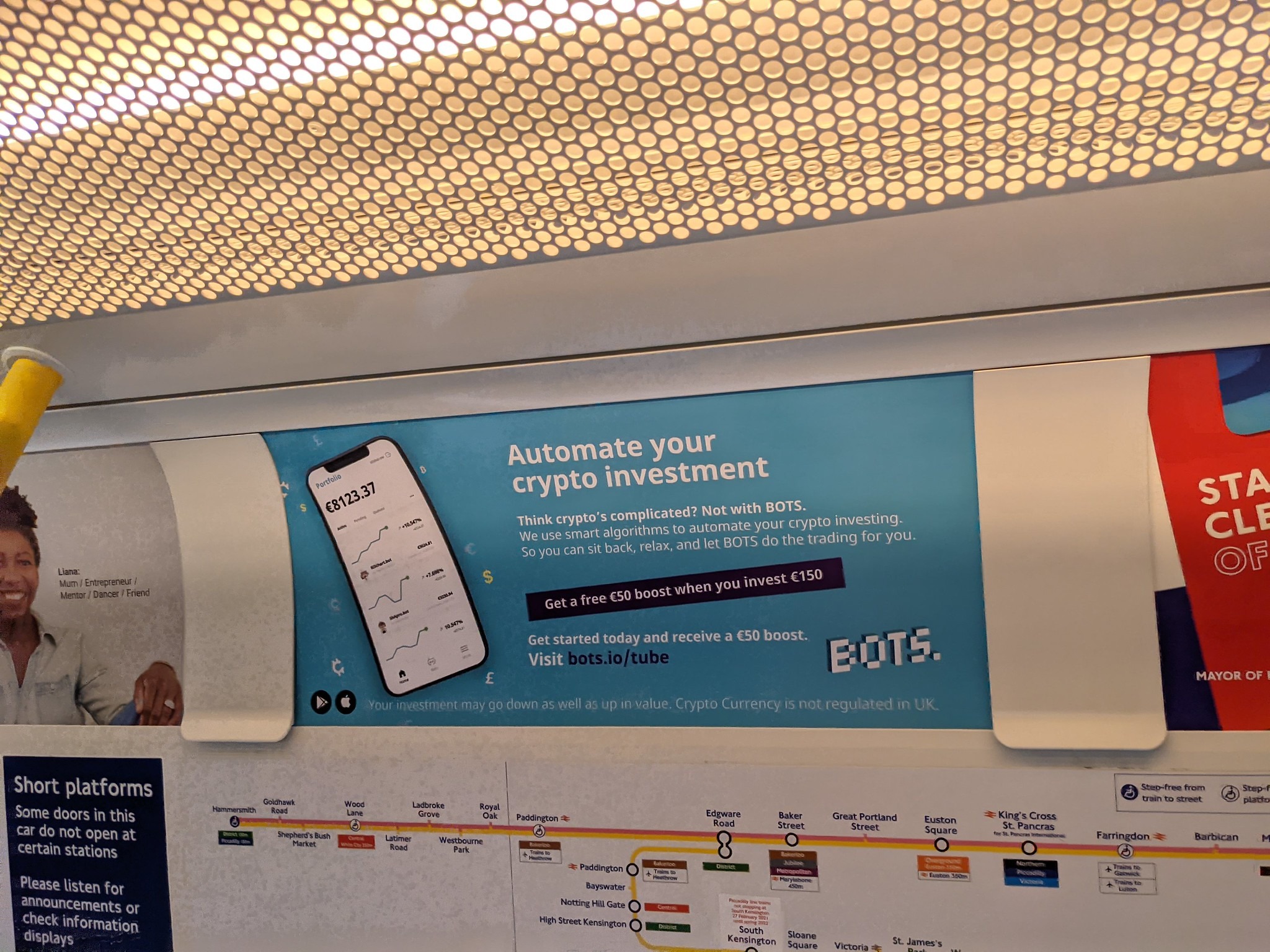A starfish is an organism without a head. So is a DAO. We dive into the regulation of decentralised autonomous organisations, including the recently enacted DAO law in Wyoming.
A starfish is an organism without a head. So is a DAO. We’re not saying a DAO is a starfish. Okay, we’ll begin again.
A new law[i] came into effect in the US state of Wyoming. This law specifically deals with decentralised autonomous organisations or DAOs. What are DAOs? How do they work? How does the law treat DAOs? These are some of the questions this article tries to answer.
What exactly is a Decentralised Autonomous Organisation or a DAO?
Quite simply, you could think of DAO as a new kind of company. The key difference being, instead of articles of association, a DAO has a
self-executing code (smart contract) to govern it. And like the word decentralised indicates, it does not have a central governing authority like a traditional company has board of directors.
In more technical terms, A DAO is a blockchain-based system that enables people to coordinate and govern themselves mediated by a set
of self-executing rules[ii] deployed on a public blockchain, and whose governance is decentralised (i.e., independent from central control).
Take Bitcoin[iii] as an example. Are you aware of an organisation that develops them? Or centrally controls them? Arguably, Bitcoin is the first DAO[iv].
But a company has shareholders, what about them?
Quite like a traditional corporation, a DAO also has members (or shareholders, but we’ll avoid the use of that term as the members may or may not own shares). Membership to a DAO may be granted in one of the following manners:
Token-based membership
In a more commonly used token-based membership[v] structure, certain tokens are granted to members. These tokens grant the members voting rights proportionate to their token holdings. You could be granted certain tokens in a DAO if you invest as part of a coin offering[vi], or if you provide liquidity[vii], or some other proof of work[viii]. Such DAOs are usually fully permissionless[ix]. If a member wants to exit a token based DAO, they can simply sell their tokens in the open market. An example of a token-based membership is ‘The DAO’[x]. You can read more about it below.
Share–based membership
Share-based membership is relatively new and uncommon. Share-based membership is permissioned yet open. Meaning that any prospective members must submit a proposal to join a DAO, usually offering tribute of some value in the form of tokens or work. Similar to shares in a traditional corporation, shares represent direct voting power and ownership. While it may appear that both forms of membership are similar, the biggest difference between token-based and share-based membership is that in share-based membership shares may be redeemed upon exit and the exiting member can receive the proportionate share of the treasury. An example of this structure is Moloch[xi]. MolochDAO is focused on funding Ethereum projects. To join Moloch, you must submit a proposal for membership and the members assess whether you have the necessary expertise and capital to make informed judgments about potential grantees.
How does it work, again?
The key to understanding the functioning of DAOs is understanding smart contracts. Think of smart contracts[xii] as self-executing code which performs functions when certain conditions are met. This code is generally in the form of ‘if/when’ statements[xiii]. For example: if a DAO is a venture capital fund, the smart contract for such DAO may contain code to fund certain project, say project ‘X’ when the fund reaches an investment pool of 200 million dollars. Since the code is self-executing and carried out on a distributed decentralised network, it adds an element of trust and security.
Now, let us say that you see potential in cricket memorabilia as non-fungible tokens or NFTs (for example, an NFT of cricketer MS Dhoni’s winning six in the 2011 Cricket World Cup) and want to invest in them. But the cost of that NFT is well beyond what you can afford alone. So, you decide to get together with other cricket enthusiasts to invest in that NFTs using a DAO. Your DAO is governed by a smart contract so the investors know that regardless of your credentials, the code on the DAO will execute. Decisions can also be taken based on the majority of token holders of such DAO so an investor knows that regardless of what you say, the majority of token holders will make governance decisions, such as when to sell that NFT of MS Dhoni’s winning six.
A bit of history
The most popular take on DAOs was when in 2016, ‘The DAO’ (yes, confusingly generic name), was set up as a venture capital fund without a central authority. ‘The DAO’ was set up as a smart contract on the Ethereum blockchain[xiv]. ‘The DAO’ functioned as follows: You could contribute Ether and receive DAO Tokens in proportion to your contribution. As a DAO Token holder, you could vote on any pitches made to the community and fund projects. If those projects made money, you would be rewarded on the basis of your DAO Token holding. At one point, the fund’s Ether value crossed more than 150 million dollars[xv]. However, shortly thereafter, ‘The DAO’ was subject to a massive attack[xvi], which initiated the downfall of ‘The DAO’. Since then, multiple decentralised projects have come up, drawing inspiration from ‘The DAO’.
What does the law say about DAOs?
Most jurisdictions around the world are silent on the treatment of DAOs[xvii] within their legal framework. Given this uncertainty, there is no clarity on their rights and obligations, their ability to sue and be sued, their ability to enter into contracts, and the rights and obligations of the human actors involved in the operation and development of DAOs. A few of these are addressed below.
Contractual
Across jurisdictions, a recognized legal entity (such as an individual, company, or another recognized form of entity) is a must to enter into a contract. Given that DAOs are yet unrecognized in most jurisdictions in the world, entering into contracts with a DAO is challenging. Even in some jurisdictions that recognize DAOs as legal entities (such as Wyoming), enforcement of contracts with DAOs would continue to be an issue[xviii] until all jurisdictions recognize them as legal entities, or at the very least give legitimacy to contracts entered into with DAOs. To solve for this, various arrangements in the past have tried to establish affiliated legal entities, that bridge the gap between DAOs and the real world. ‘The DAO’ for instance, established an affiliate company in Switzerland[xix], by the name DAO.Link, to allow ‘The DAO’ to enter into contracts and the contractors to raise invoices on DAO.Link. Given the problems DAO set out to solve, the use of such intermediate agents appears ironic[xx]. The Cayman Islands Foundation Companies Law, 2017[xxi], which fortuitously came out around the same time as increasing popularity of DAOs, may also be used to set up an affiliate foundation company for DAOs. A foundation company under the law is a flexible vehicle[xxii] that operates like an incorporated trust, allowing it to function like a civil-law foundation or common-law trust while retaining the separate legal personality and limited liability of a company.
Liability
What if you want to sue a DAO? Who do you sue? Who is responsible for actions of a DAO?
For years since the introduction of the legal fiction called corporation, the law grappled with liability issues from the acts of a corporation[xxiii]. If you introduce something novel and it does not fit within one of the existing legal structures, the law will try to fit it within one anyway[xxiv] (cue, cryptocurrencies). For DAOs, that structure is most likely to be general partnership (and not limited liability partnership or LLP).
Under the US law[xxv], a partnership is said to exist where two or more persons associate to carry on as co-owners, a business for profit, whether or not the persons intend to form a partnership[xxvi]. The law relating to general partnership is recognized in India under the Partnership Act, 1932[xxvii]. Under the Act, ‘partnership’ is the relation between persons who have agreed to share the profits of a business, carried on by all or any of them acting for all[xxviii]. However, as opposed to the US law, where the intent of the parties to form a partnership is immaterial, in India, whether a partnership exists is a determination based on the intent of parties and relevant facts[xxix]. The key features of a DAO such as sharing of profits, running a business, and making key decisions together are likely to satisfy[xxx] the requirements of a partnership across jurisdictions[xxxi].
If a DAO is construed as a general partnership, it is bad news for all members involved. The liability of partners under a general partnership is unlimited. The partners are jointly and severally liable for any liability arising from the business and the acts or omissions of the other partners[xxxii]. This means that each member is responsible for acts of all the other members of a DAO. If a DAO doesn’t have assets to satisfy its debts or its legal obligations, the personal assets of members may be used to satisfy such obligations.
Which members will be hauled up by the courts to satisfy the obligations of a DAO? Most likely, the courts will pierce the veil and start looking for the first human actor[xxxiii] behind the DAO. This could be the developer, promoter or creator of a DAO[xxxiv].
Are DAO tokens securities?
As discussed earlier, issuance of tokens is central to most DAO structures, if not all. In the aftermath of ‘The DAO’, the Securities and Exchange Commission (SEC) came up with a report[xxxv] investigating whether DAO Tokens were securities. In the US, the term security includes an ‘investment contract’. The test to determine whether an instrument is an investment contract is the Howey Test[xxxvi], established in the case of SEC v. W.J. Howey Co. As per the Howey’s Test, if there is an investment of money in a common enterprise with a reasonable expectation of profits to be derived from the entrepreneurial or managerial efforts of others, there is an investment contract. The SEC in its report concluded that whether or not particular transaction involves the offer and sale of a security— regardless of the terminology used—will depend on the facts and circumstances, including the economic realities of the transaction. The SEC further clarified that the securities law requirements will apply regardless of whether the issuing entity is a traditional company or a decentralized autonomous organization, regardless whether those securities are purchased using U.S. dollars or virtual currencies, and regardless whether they are distributed in certificated form or through distributed ledger technology[xxxvii].
In the past few years, the SEC has opened investigations against and penalized[xxxviii] several token offerings including that of Telegram[xxxix] for breach of securities law. All DAOs must thereforemake a clear assessment of whether the tokens being issued by them would qualify as securities in the jurisdiction where the tokens are being offered and issued. If a DAO intends to avoid triggering securities regulations, it is preferable to avoid making such tokens fungible and granting token holders rights to dividend (or other profits). An important distinction to keep in mind is between security and utility tokens[xl]. Utility tokens are tokens that merely provide users with a product and/or service. An example of a utility token is the Basic Attention Token[xli] (BAT) which acts as a utility on the Brave browser. Security tokens, on the other hand, are securities in the form of tokens.
Jurisdiction: who governs a DAO?
Simply put, jurisdiction is a government’s general power to exercise authority over all persons and things within its territory[xlii]. In a judicial sense, it is a court’s power to hear and decide disputes within a specified territory. This means that if a court does not have jurisdiction, it may not hear certain disputes or matters. For example, in India, only the Sessions court and courts higher in hierarchy to it can decide on granting death penalty as the lower courts do not have the jurisdiction to do so.
DAOs are multi-jurisdictional entities. Unlike companies, they do not have a country of incorporation, a place of governance, or a principal office. Under existing legal systems, the jurisdiction which applies to entities is largely based on the place of incorporation of such organisation (incorporation theory[xliii]) or the place where key managerial decisions of such organisation are taken (real seat theory[xliv]). Neither of these theories would solve the confusion around the jurisdiction of a DAO as DAOs can be nowhere and everywhere[xlv].
One possible solution[xlvi], however, could be to allow the creditor or the plaintiff the right to choose the applicable forum (Lex fori[xlvii]). However, this would not address the problem of taxation and corporate governance jurisdiction as all states would try and exercise jurisdiction on a DAO.
In the United States, the courts typically exercise jurisdiction over non-resident corporations relying on “long arm statutes”. As the name suggests, these statutes allow courts to stretch their jurisdiction to non-resident entities if they have ‘sufficient minimum contacts’ within the state. What constitutes such minimum contacts is a subjective determination, however, entering into a contract in a state, or committing a tort in a state are some common examples of things[xlviii] that will subject someone to personal jurisdiction in another state, under a long-arm statute. The applicability of long arm statues to unincorporated entities such as the DAO remains unclear.
As things stand, the applicable jurisdiction for a DAO is in a state of flux. It is preferable for DAOs to fall within the jurisdiction of one state, instead of all states trying to wrest control over them in some manner. To that extent, incorporation (or licensing) regimes that recognize DAOs will be blessing for the industry.
Wyoming law on DAOs
The US state of Wyoming recently passed the “Wyoming Decentralized Autonomous Organization Supplement”. The new law is an add-on to the current Wyoming Limited Liability Company Act. This is a unique law that expressly recognizes DAOs as limited liability companies (LLC). It has also been argued in the past that there is merit[xlix] to recognizing DAOs as limited liability companies. The LLC structure addresses the biggest concern[l] of DAO members – personal liability for the actions of the DAO.
As per the law, the articles of organisation of a DAO may define it as member managed or algorithmically managed[li]. An algorithmically managed DAO, which would truly be decentralized, may be formed only if the underlying smart contracts are capable of updates or modifications. The law also provides a hierarchy of the documents/instruments governing a DAO, as per which, the smart contract prevails over all other documents/instruments[lii].
So, should you incorporate your DAO in Wyoming?
The answer to that is both, yes and no. Yes, because it is the only jurisdiction where there is an express recognition for a DAO and limited liability for its members. Express recognition would allow benefits such as ability to enter into contracts, sue in its name (and be sued) and hold property. No, because the law does not answer all questions. Most importantly, if there is an LLC registered in Wyoming, is it really a decentralised organisation[liii]? What about taxes? It is also interesting to note that the law requires a registered agent[liv] to be maintained by a DAO in Wyoming at all times. This means that imposing liability on a DAO would become easier.
Long answer short, Wyoming offers DAOs regulatory certainty to a greater extent than most other jurisdictions and is certainly a more favourable jurisdiction to operate a DAO.
Conclusion
DAOs have opened up a new paradigm of corporate structure. Up until now, corporations were limited to some extent by their jurisdiction, and corporate governance rules. DAOs envisage an idea of a truly global, and truly decentralised organisation. They have a flat hierarchy in the true sense. And since smart contracts are self-executing, it eliminates human malaise to a great extent and enables democratization of the corporation. A DAO can make it extremely easy to pool resources globally and collaborate, without compromising on trust. Think of a case where the members of a DAO may own real estate together[lv]. Think of a DAO which enables its members to fund climate change initiatives across the world.
Law almost always follows technology. In this case as well, there are questions that legislators across the world need to address. Legislators need to take into account the potential that DAOs hold and adopt a regulatory framework which enables DAOs to operate in consonance with the law. Such framework should account for liability of the members of a DAO, the jurisdiction for governing and regulating DAOs and a clear taxation framework for the activities of a DAO. Legislators must remember that the corporation, which seems like a fairly straightforward association of persons today is also a legal fiction. A fiction that once posed the same questions that DAOs pose today. The limited liability corporation is often touted as the greatest single discovery of the industrial era[lvi]. DAOs may just be the next since the turn of the millennium.
Authored by Priyam Jhudele, Associate with inputs from Anirudh Rastogi, Founder and Managing Partner at Ikigai Law.
More about Ikigai Law: At Ikigai Law, we have been pioneers in advising blockchain and cryptocurrency businesses in India. We advised on the structuring of some of India’s first cryptocurrency exchanges and initial coin offerings. The firm represented leading exchanges in their petition before the Supreme Court successfully challenging the India central bank’s ban on banking for crypto-businesses.
Image credits: Pixabay
[i] Wyoming Decentralized Autonomous Organization Supplement. (66th Leg.) Gen. Sess. (2021).
[ii] Hassan, S. & De Filippi, P. (2021). Decentralized Autonomous Organization, Internet Policy Review, 10(2). Available at: https://doi.org/10.14763/2021.2.1556
[iii] Hsieh, YY., Vergne, JP., Anderson, P (2018). Bitcoin and the rise of decentralized autonomous organizations, J Org Design 7(14). Available at: https://doi.org/10.1186/s41469-018-0038-1
[iv] Vitalik Buterin (2014). Daos, DACs, DAs and More: An Incomplete Terminology Guide, Ethereum Foundation Blog. Available at: https://blog.ethereum.org/2014/05/06/daos-dacs-das-and-more-an-incomplete-terminology-guide/
[v] Decentralized Autonomous Organizations (DAOs). Available at: https://ethereum.org/en/dao/
[vi] Jake Frankenfield. Initial Coin Offering (ICO). Available at: https://www.investopedia.com/terms/i/initial-coin-offering-ico.asp
[vii] What is a Liquidity Provider? Available at: https://coinmarketcap.com/alexandria/glossary/liquidity-provider
[viii] Jake Frankenfield. Proof of Work (PoW). Available at: https://www.investopedia.com/terms/p/proof-work.asp
[ix] Anant Kadiyala. Nuances between Permissionless and Permissioned Blockchains. Available at: https://medium.com/@akadiyala/nuances-between-permissionless-and-permissioned-blockchains-f5b566f5d483
[x] Samuel Falkon. The Story of the DAO – Its History and Consequences. Available at: https://medium.com/swlh/the-story-of-the-dao-its-history-and-consequences-71e6a8a551ee
[xi] Moloch Dao. Available at: https://www.molochdao.com/
[xii] Jake Frankenfield. Smart Contracts. Available at: https://www.investopedia.com/terms/s/smart-contracts.asp
[xiii] What are Smart Contracts on Blockchains. Available at: https://www.ibm.com/in-en/topics/smart-contracts
[xiv] Samuel Falkon, supra note x
[xv] Nathaniel Popper. A venture fund with plenty of virtual capital, but no capitalist. Available at: https://www.nytimes.com/2016/05/22/business/dealbook/crypto-ether-bitcoin-currency.html?_r=1
[xvi] David Siegel. Understanding the Dao Attack. Available at: https://www.coindesk.com/understanding-dao-hack-journalists
[xvii] What will be the impact of blockchain on the legal industry? Available at: https://www.legal.io/articles/5170586/What-will-be-the-impact-of-blockchain-on-the-legal-industry
[xviii] Andrew Lom, Rachel Browndorf. Wyoming to recognize DAOs as LLCs. Available at: https://www.regulationtomorrow.com/us/wyoming-to-recognize-daos-as-llcs/
[xix] David Harrison (2016). Decentralized Autonomous Organizations (DAOs). Available at: https://www.allenovery.com/en-gb/global/news-and-insights/publications/decentralized-autonomous-organizations
[xx] Garcia Rolo, Antonio (2018). Challenges in the Legal Qualification of Decentralized Autonomous Organization (DAOs): The Rise of the Crypto-Partnership? Revista de Direito e Tecnologia, Vol 1. Available at: https://papers.ssrn.com/sol3/papers.cfm?abstract_id=3417900
[xxi] The Foundation Companies Law, 2017 (KY).
[xxii] Bradley Kruger, Michael Robinson (2020). The Foundation Company as a Decentralised Autonomous Organisation (DAO) in the Cayman Islands. Available at: https://www.mondaq.com/caymanislands/coronavirus-covid-19/920006/the-foundation-company-as-a-decentralised-autonomous-organisation-dao-in-the-cayman-islands
[xxiii] Ankoosh Mehta, Smruti Shah, Neham Tayal, Durga Agarwal, King Dungerwal (2020). Corporations: Legal Fiction or An Unborn Predator. Available at: https://www.scconline.com/blog/?p=232120
[xxiv] Stephen D. Palley (2016). How to sue a Decentralized Autonomous Organization. Available at: https://www.coindesk.com/how-to-sue-a-decentralized-autonomous-organization
[xxv] Uniform Partnership Act, 1997 (US).
[xxvi] Section 202, Revised Uniform Partnership Act, 1997
[xxvii] The Partnership Act, 1932 (IN).
[xxviii] Section 4, The Partnership Act, 1932.
[xxix] Section 6, The Partnership Act, 1932.
[xxx] The European Union Blockchain Observatory Forum (2019). Legal and Regulatory Framework of Blockchains and Smart Contracts. Available at: https://www.eublockchainforum.eu/sites/default/files/reports/report_legal_v1.0.pdf
[xxxi] Garcia Rolo, Antonio (2018). Supra Note xx
[xxxii] Section 25, The Partnership Act, 1932.
[xxxiii] Stephen D. Palley (2016). Supra Note xxiii
[xxxiv] David Harrison (2016). Supra Note xix
[xxxv] Securities and Exchange Commission (25/07/2017). Report of Investigation Pursuant to Section 21(a) of the Securities Exchange Act of 1934: The DAO (Release No. 81207). Available at: https://www.sec.gov/litigation/investreport/34-81207.pdf
[xxxvi] Nathan Reiff (2021). Howey Test. Available at: https://www.investopedia.com/terms/h/howey-test.asp
[xxxvii] Securities and Exhange Commission (25/07/2017). Supra Note xxxv
[xxxviii] U.S. Securities and Exchange Commission (16/11/2018). Two ICO Issuers Settle SEC Registration Charges, Agree to Register Tokens as Securities (2018-264). Available at: https://www.sec.gov/news/press-release/2018-264
[xxxix] U.S. Securities and Exchange Commission (26/06/2020). Telegram to Return $1.2 Billion to Investors and Pay $18.5 Million Penalty to Settle SEC Charges (2020–146). Available at: https://www.sec.gov/news/press-release/2020-146#:~:text=Press%20Release-,Telegram%20to%20Return%20%241.2%20Billion%20to%20Investors%20and%20Pay,Penalty%20to%20Settle%20SEC%20Charges&text=The%20Securities%20and%20Exchange%20Commission,settlements%20with%20Telegram%20Group%20Inc
[xl] Rajarshi Mitra (2020). Utility Tokens vs Security Tokens: Learn the Difference – Ultimate Guide. Available at: https://blockgeeks.com/guides/utility-tokens-vs-security-tokens/
[xli] BAT – Making Crypto and DeFi accessible and useable for everyone. Available at: https://basicattentiontoken.org/
[xlii] Black’s Law Dictionary (9th Ed.) (2009). Page 927.
[xliii] Garcia Rolo, Antonio (2018). Supra Note xx
[xliv] Garcia Rolo, Antonio (2018). Supra Note xx
[xlv] Wiesflecker, Lukas. What does the DAO do, and how does it work? Available at: https://medium.datadriveninvestor.com/what-does-the-dao-do-and-how-does-it-work-a7f8bb8b8d36
[xlvi] The European Union Blockchain Observatory Forum (2019). Supra Note xxvi
[xlvii] Biyan Mienert (2018). Which Jurisdiction does apply for autonomous Blockchain based Organizations (DAOs; DACs). Available at: https://www.linkedin.com/pulse/which-jurisdiction-does-apply-autonomous-blockchain-based-mienert/
[xlviii] Stephen D. Palley (2016). Determining Jurisdiction When a DAO is Sued. Available at: https://www.coindesk.com/legal-liability-dao
[xlix] Nielsen, Timothy (2020). Cryptocorporations: A Proposal for Legitimizing Decentralized Autonomous Organizations. Utah Law Review Vol. 5. Available at: https://dc.law.utah.edu/ulr/vol2019/iss5/5?utm_source=dc.law.utah.edu%2Fulr%2Fvol2019%2Fiss5%2F5&utm_medium=PDF&utm_campaign=PDFCoverPages
[l] Andrew Lom, Rachel Browndorf (2021). Supra Note xviii.
[li] William K. Kane, Zachary Golda (2021). Wyoming Takes the lead with Decentralized Autonomous Organizations. The National Law Review Volume XI (187). Available at: https://www.natlawreview.com/article/wyoming-takes-lead-decentralized-autonomous-organizations
[lii] Wyoming Decentralized Autonomous Organization Supplement. ¶ 17-31-115. (66th Leg.) Gen. Sess. (2021).
[liii] Latham & Watkins LLP (2021). Decentralized Autonomous Organizations Find a Home in Wyoming. Available at: https://www.jdsupra.com/legalnews/decentralized-autonomous-organizations-5960480/
[liv] Wyoming Decentralized Autonomous Organization Supplement. ¶ 17-31-105. (66th Leg.) Gen. Sess. (2021).
[lv] Theodor Marcu (2021). The ABCs of DAOs. Available at: https://1729.com/daos/
[lvi] Tim Harford (2017). How a creative legal leap helped create vast wealth. Available at: https://www.bbc.com/news/business-40674240










